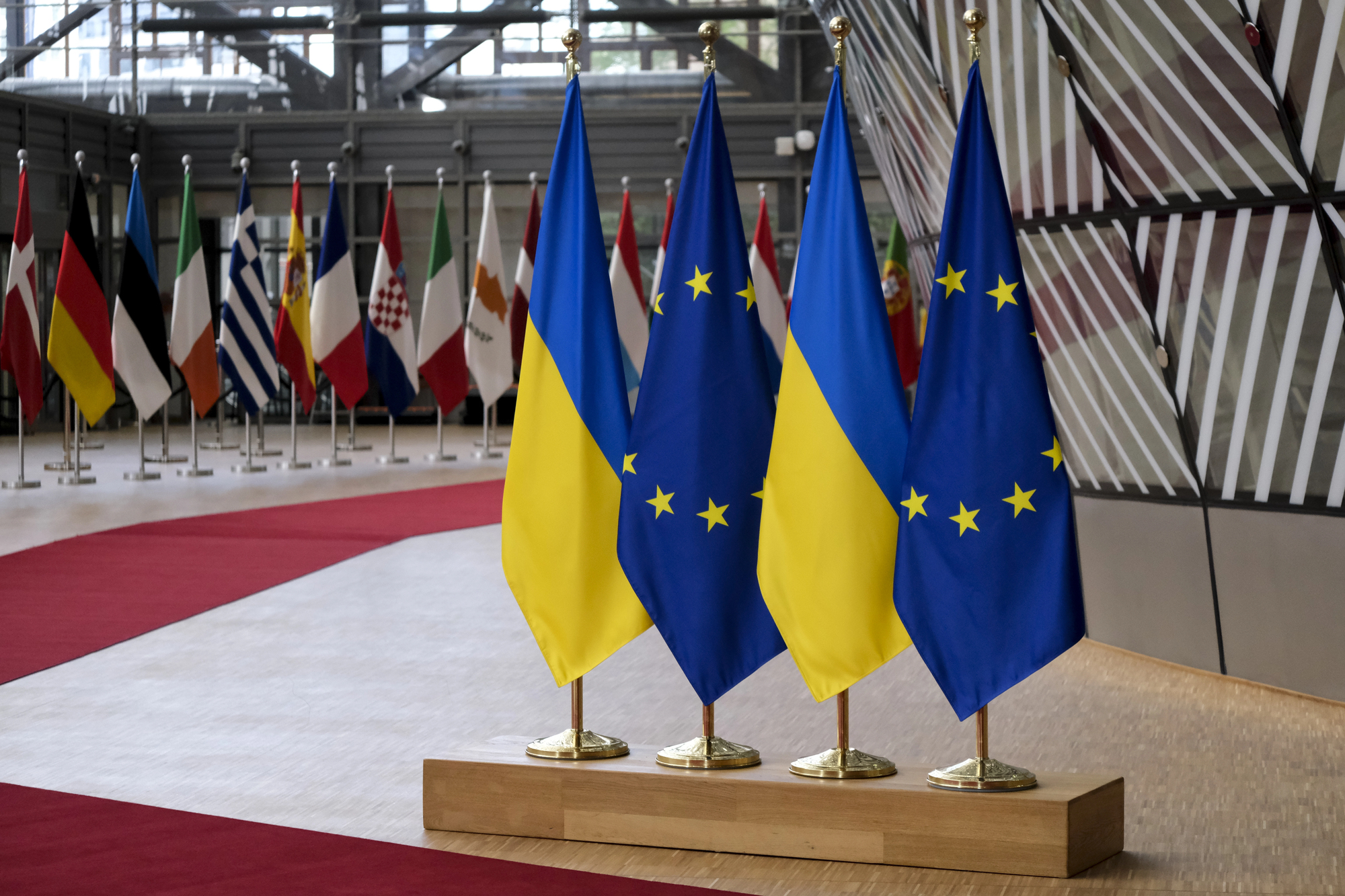The one weakness of plan of Ukrzaliznytsia, that I fear has to do with long-term investments in the infrastructure. If the European experience is any guide, reforms under this model may be expected to be successful in creating competition and incentivizing private investment in locomotives and rolling stock. Still it seems that the need for investment in the rail infrastructure in Ukraine is just as great as that for locomotives and rolling stock, and here I am not so confident as others may be that the proposed legislation will be successful.
One determinant of the success of Ukrainian economic reforms will be the creation of a modern, efficient railway to carry the steel, iron ore, coal, agricultural products, and other goods that power the economy to customers and export points. At the beginning of the summer, the Ministry of Infrastructure circulated legislation that would impose fundamental reforms on the existing Ukrzaliznytsia. The proposed reforms are designed to transform the old, vertically integrated, state-owned monopoly into a vertically separated system, with multiple freight and passenger train operating companies (TOC’s) running and competing on the tracks of a monopoly state-owned infrastructure company.
As was pointed out at the time – and as was noted recently in these pages in an excellent article by Svitlana Zabolotska – this rail reform “model” follows the lead of European Union directives and the example of a number of European railways, especially that of Germany, where the monopoly infrastructure company DB Netz is required to provide access to independent freight and passenger TOC’s without discriminating in favor of its own affiliated TOC’s [1]. Thus this broader reform model is frequently labeled the “European model”.
I believe that this legislation has many good points and, if enacted, would likely result in a significant upgrading of the Ukrainian railways. Nevertheless I take the liberty of reiterating my support for an alternative reform model, sometimes termed the “American model”, in which there are multiple companies controlling separate sections of the rail infrastructure, and for the most part the only trains running on that infrastructure are trains owned by the company that controls the infrastructure. I do this first by replying to two criticisms of this model made by Ms. Zabolotska, and second by pointing out what I believe to be one important weakness in the application of the European model to Ukraine.
However, all of this requires an initial clarification. What is often termed the “American model” might be more felicitously termed the “North American model”. This is because the model of privately owned, vertically integrated railways competing with each other for traffic – the Union Pacific Railway running its own trains over its own tracks and competing with the Burlington Northern Santa Fe Railway running its own trains over its own tracks – applies equally well to Mexico and Canada as to the United States.
But, more importantly, it is because of important differences in the principal ways in which the US railways compete with each other vis-à-vis the ways in which the Mexican railways compete with each other, differences quite relevant for the possible application of this model to Ukraine.
A good deal of the competition between US railways is competition over “parallel” lines: both the UP and the BNSF have lines running between, say, Los Angeles/Long Beach and Chicago, so both can and do compete to carry freight between those two points. What may not be so well known, however, is that the US railways also compete with each other for freight even when their lines are not “parallel” – that is, even when they do not serve the same origin-destination pair.
The best known example concerns grain shipments originating in the Midwest: it was shown many years ago that railways seeking to carry the grain from the Midwestern farm belt south to Gulf of Mexico ports for export were competing with railways offering to carry the same grain northwest to Pacific Ocean ports for export [2]. This second type of rail competition – where two railways compete to carry freight from the same origin to different destinations – or, conversely, from different origins to the same destination – is sometimes termed “geographic competition”.
When Mexico, a country with a railway of similar size to the Ukrainian railway, restructured its failing, state-owned railway in the late 1990’s, its policy makers considered adopting the European model of multiple TOC’s competing over a monopoly track structure, but decided instead on an American style model: they divided the system into three main regional railways that all served Mexico City from different directions, and they offered tenders for long-term franchise agreements to these three new railways to private firms. The result was three privately controlled, vertically integrated railway companies, each controlled by a domestic investor with foreign partners, not owning the infrastructure but with 50-year exclusive franchise agreements, plenty long enough to encourage private investment.
Thus if a steel company operating near Mexico City wished to export its output, it had three different railways competing for the right to carry the steel to export points – different export points, but all with access to world markets. Similarly, if an auto maker located near Mexico City wished to import spare parts, it had three different railways competing for the right to carry imported parts to its plant – parts that may have originated in the US or Brazil or Ukraine and may have arrived in different Mexican ports, but in any case would be carried by rail to Mexico City. (These three independent railways have more recently become only two, through a merger that was fought by the Mexican competition authority.)
In fact, according to historians, this system has worked in Ukraine and Russia as well. In the mid-nineteenth century, the Black Earth region of the Russian Empire was served by railway companies that carried the grain harvests north and west to Baltic Sea ports for export (for example, the Tsaritsyn-Riga line), and these railroad companies faced competition from railway companies that served the same Black Earth region but carried the grain harvests south and west to Black Sea ports (especially the Odessa Railway). All the railways involved complained of the low rates that resulted from the intense competition [3].
The American model has its advantages and disadvantages. The creation of several regional railways leaves some shippers with no competition, and only now are the Mexican regulator and competition authority beginning to successfully address that. (It has helped in Mexico that so much of the economy is concentrated in and around Mexico City.) But by all accounts the improvements in the overall system have been dramatic, and have contributed significantly to the growth of the Mexican real economy.
As important for our purposes are the impressive sums of private investment that have been attracted into the system by the reforms: over USD 2 billion in bids for the franchise rights alone – over USD 150 thousand per track-km – plus over USD 6 billion in private investments in the infrastructure, locomotives, and rolling stock in the fifteen years following the reforms [4].
This experience is the source of both the two corrections I suggest to criticisms of the American model of reform and the possible weakness that I believe accompanies the application of the European model of reform for Ukraine.
First, note that in Mexico the infrastructure was not “privatized”, at least not in the sense of permanent ownership. The state granted 50-year exclusive control rights for different sections of the infrastructure to 3 separate consortia of private firms and investors, and this has clearly been a long enough term of control to provide incentives for investments. I am not a lawyer, Ukrainian or otherwise, so I cannot say whether a system like this could be crafted under the Ukrainian law that, Ms. Zabolotska reports in her VoxUkraine article, prohibits “privatization” or “alienation” of the infrastructure. However, I can say that similar arrangements were made in railways reforms in both Argentina and Brazil [5].
Second, Ms. Zabolotska argues that it would not be feasible to create much American-style “parallel” competition in the Ukrainian railway system. This may be so, but the Mexican experience suggests that quite a bit of competition and investment may be created by setting up a system that relies on “geographic” competition instead. I have argued in a separate paper that a Ukrainian railways reform plan based on the American system might be based on two or three independent, vertically integrated railways competing with each other for freight traffic to and from Kyiv, Odessa, and, in the more peaceful future we all hope for, the Donbas and/or Kryvbas [6].
For those two reasons, I believe that the criticisms of the possible application of the American model in Ukraine are not necessarily fatal. Still, what is wrong with the reform plan introduced by the Ministry of Industry? As I stated earlier, this plan, based on a European reform model, has much promise, and seems likely to deliver significant improvements over the current situation if enacted.
The one weakness that I fear has to do with long-term investments in the infrastructure. If the European experience is any guide, reforms under this model may be expected to be successful in creating competition and incentivizing private investment in locomotives and rolling stock. Still it seems to me that the need for investment in the rail infrastructure in Ukraine is just as great as that for locomotives and rolling stock, and here I am not so confident as others may be that the proposed legislation will be successful.
The legislation calls for a new regime of freight tariffs that will include an infrastructure component. That is, those tariffs that are regulated will include component parts to pay for locomotives, rolling stock, labor, energy, and the maintenance and improvement of the infrastructure. The money in the last category will be “earmarked” for this use only and not permitted to be devoted to other purposes by the infrastructure company or by the government. There is also the possibility of direct contributions by the government for the infrastructure.
The problem that I see is that today’s government may be unable to commit future governments. In general, the world experience suggests that relying on state treasuries for rail infrastructure funding is a risky bet. Every government faces pressing needs from different sections of the population, real “opportunity costs” for devoting resources to one need rather than another. In the world experience, governments tend to reason that the railway infrastructure will always last for another year, while available monies are devoted to more pressing demands. Will the Ukrainian experience be any different?
If one is confident that a system of earmarking or sequestering freight railway revenues for the particular investment requirements of the infrastructure can be made to work, the current legislative proposal may lead to a successful future for the Ukrainian railway and the Ukrainian economy. If, on the other hand, the government is unable to prevent available funds from leaking into more pressing immediate applications, the competing freight and passenger TOC’s that enter the Ukrainian market may find themselves trying to operate on the same deteriorating track, with the same frustrating capacity bottlenecks, that impede operations and growth today.
My own opinion is that while the proposed legislation has a lot to like, the alternative American model might be the more promising choice.
Notes
[1] Olga Bystritska, “The New law for Ukrainian Railways: Five Key Aspects,” Centre for Transport Strategies, 15 June 2015; Svitlana Zabolotska, “Why the American Model is Unacceptable for the Ukrainian Railway Reform,” VoxUkraine, 14 September 2015
[2] James MacDonald, “Competition and Rail Rates for the Shipment of Corn, Soybeans, and Wheat,” RAND Journal of Economics 18 (1987), 151-163
[3] Russell Pittman, “Make or buy on the Russian railway? Coase, Williamson, and Tsar Nicholas II,” Economic Change and Restructuring 40 (2007), 207-221, citing the work of Aleksandr A. Bublikov, Hugo R. Meyer, and J.N. Westwood
[4] Juan Carlos Villa and Emilio Sacristán-Roy, “Privatization of Mexican railroads: Fifteen years later,” Research in Transportation Business & Management 6 (2013), 45-50
[5] Antonio Estache, Marianela González, and Lourdes Trujillo, “What Does ‘Privatization’ Do for Efficiency? Evidence from Argentina’s and Brazil’s Railways,” World Development 30 (2002), 1885-1897
[6] “Restructuring the Ukrainian Railway: Low Hanging Fruit for the Country’s Fiscal Needs,” VoxUkraine, 17 January 2015, and “Railways Restructuring and Ukrainian Economic Reform,” Man and the Economy 2 (2015), 87-107. See also Jefferson Sinclair, “How Can Ukraine’s Railways Be Privatized?”, VoxUkraine, 21 August 2015
This is a response to the article “Why the American Model is Unacceptable for the Ukrainian Railway Reform” by Svitlana Zabolotska
Attention
The author doesn`t work for, consult to, own shares in or receive funding from any company or organization that would benefit from this article, and have no relevant affiliations



